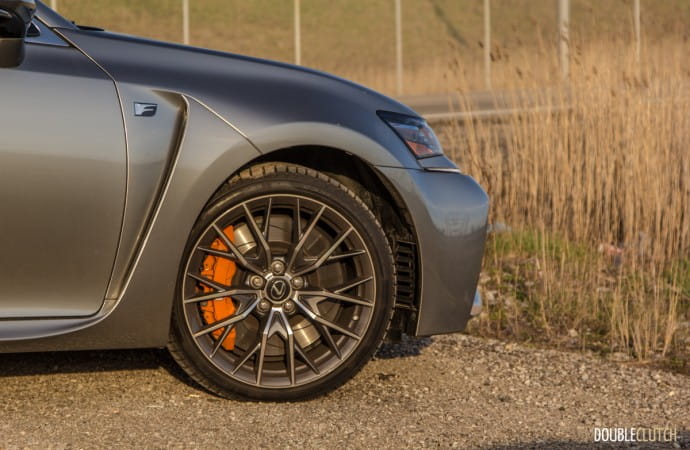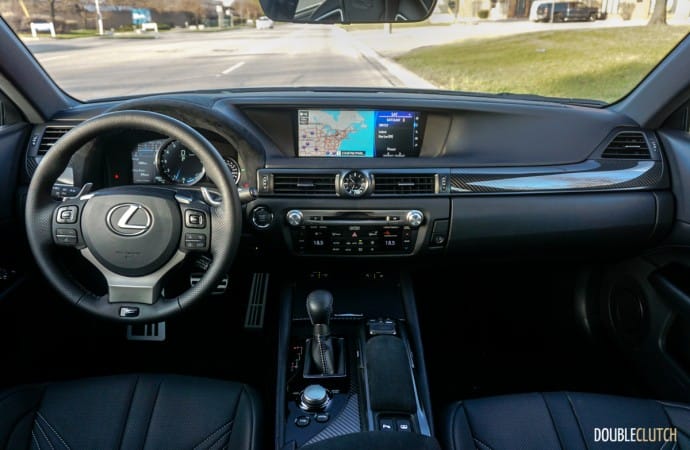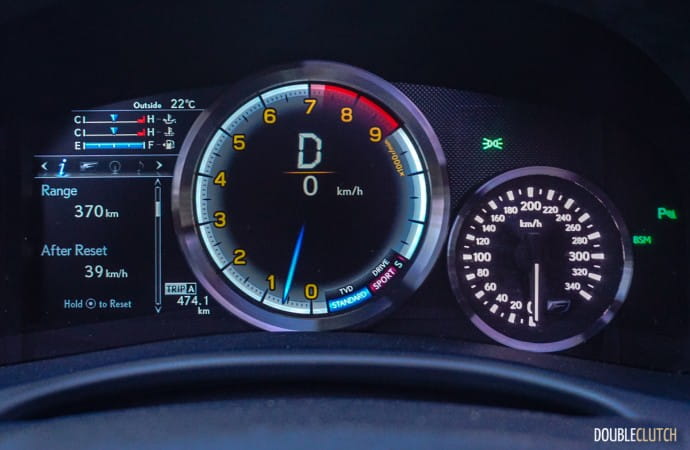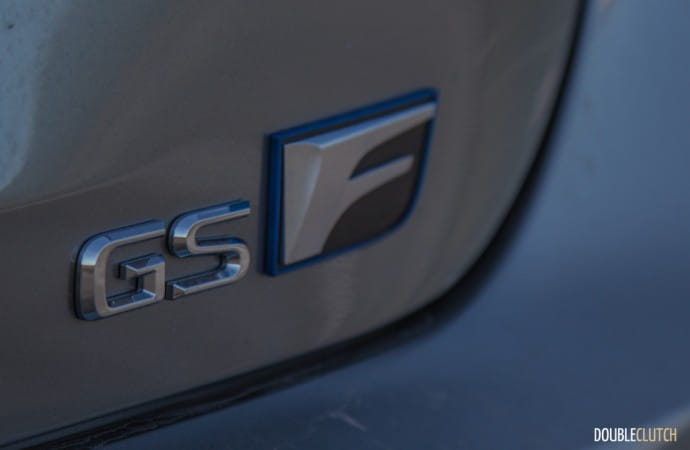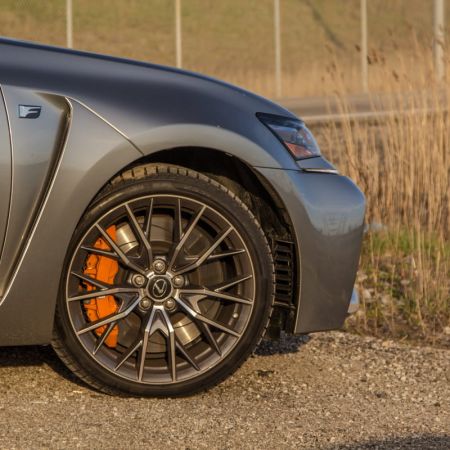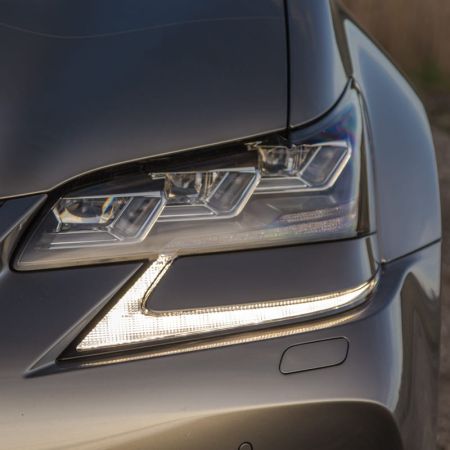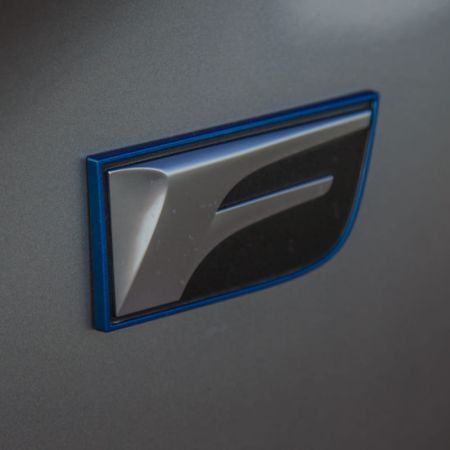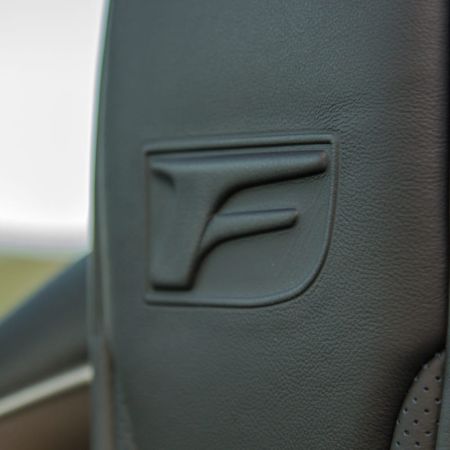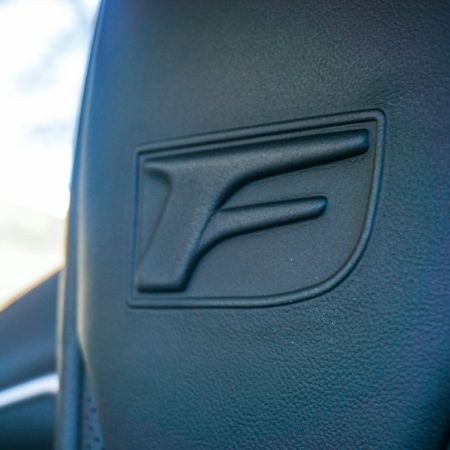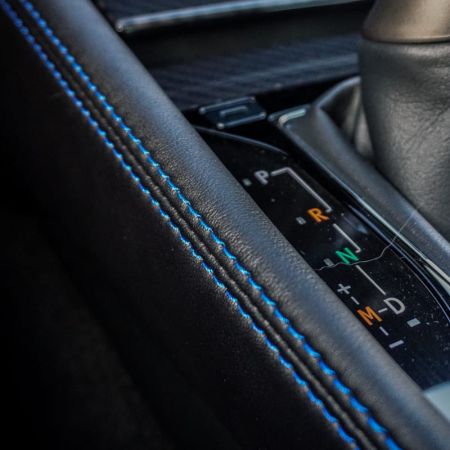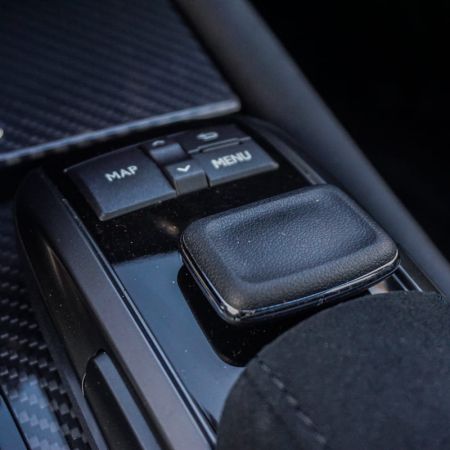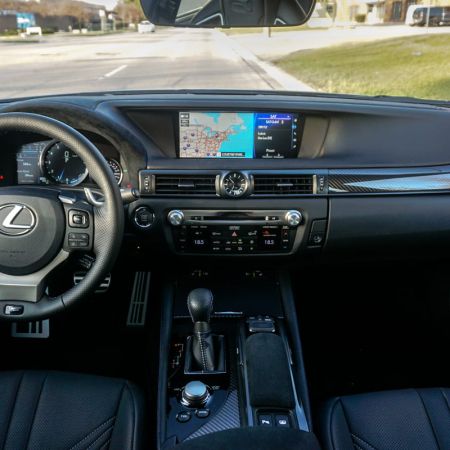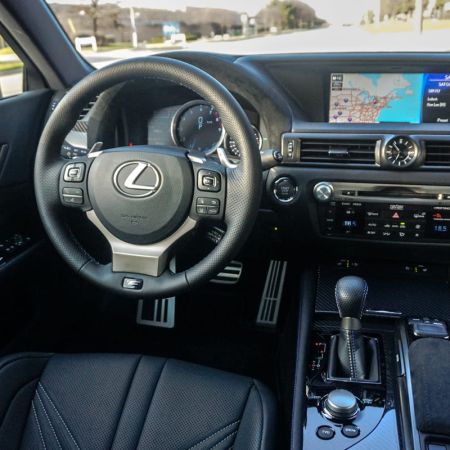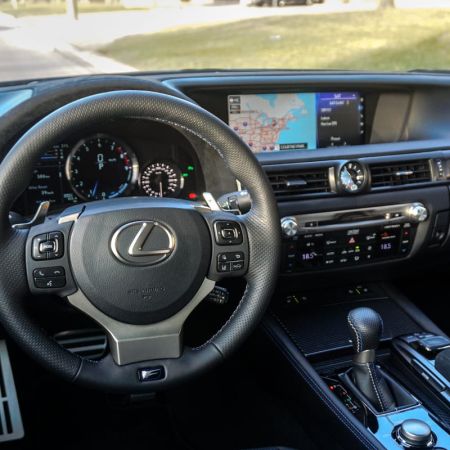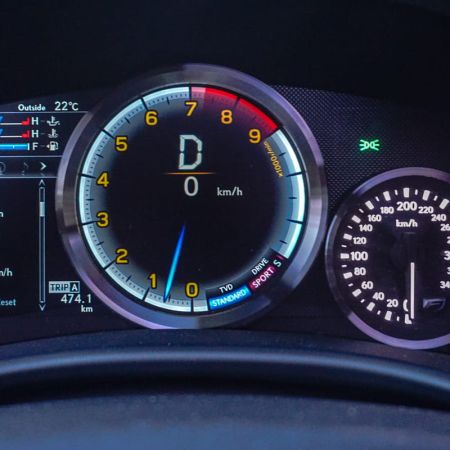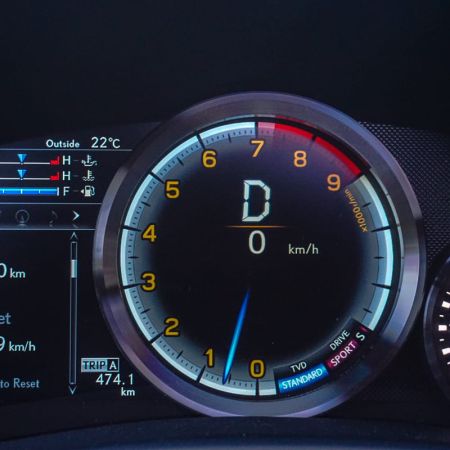In a time where the big three German automakers are trying to maximize performance while maintaining efficiency using forced-induction, the Japanese have a seemingly different agenda. The 2017 Lexus GS F, introduced just over a year ago, is a silent killer in its own segment. Its “F” moniker sets it apart from its regular GS 350 sibling (reviewed here), and the GS F is the first dedicated performance sedan from Lexus since the IS F.
A common comparison made is that the GS F isn’t as quick as the likes of the BMW M5 and Mercedes-AMG E 63. This is definitely the case, but the big Lexus doesn’t rival these cars at all – it’s a strict competitor to the Mercedes-Benz E 550, Audi S6 and, if price is anything to go by, the Cadillac CTS-V (reviewed here). All of these sedans are designed to deliver opulent luxury when demanded, but in their sportiest setting, they transform into bahn-storming monsters with symphonic V8s under the hood. There is, however, something that differentiates the Japanese muscle sedan from its European rivals.
The Lexus GS F doesn’t use any sort of fancy forced induction. The engine under the hood isn’t turbocharged or supercharged, and it definitely doesn’t pack plug-in hybrid technology. This GS F is powered by a brute; a naturally aspirated 5.0L V8, offering a fiery 467 horsepower at 7,100RPM and 389 lb-ft of torque at 4,800RPM. This is the same powertrain offered in the sexy RC F coupé (reviewed here), and gives the urgent power delivery that a Japanese hot rod should possess. The V8 packs direct injection and port injection, and optimizes power delivery in a way only the best Japanese engineers can design. Oh yeah, and it sounds delightful too, with a confident roar from the exhaust combined with intake noise piped into the cabin on acceleration.
Power is sent to the rear wheels through an eight-speed automatic transmission manufactured by Aisin. The transmission shift quality is always crisp, snapping off shifts imperceptibly regardless of the selected drive mode, and should you want to change your own gears, a responsive manual mode is available with wheel-mounted paddle shifters. In Sport and Sport Plus modes, the car will rev-match down shifts perfectly, only confirming the fact that this is one of the best non-dual clutch automatic transmissions available on the market today.
A very unique party piece on the GS F that precisely none of its rivals offer is the torque-vectoring rear differential. This tech works brilliantly on the RC F and is just as good on the GS F, in that it uses more than just the brakes against the rear axle. The electronic unit toggles between “Slalom”, “Track”, and “Expert” modes, using clutches which send the desired amount of power to either wheel. The “Expert” setting takes a couple of seconds to set up, but this is the sportiest setting with all assists turned right off. As the name suggests, this isn’t a mode that should be used on the street, but will wake the car right up in a track setting.
So, how does the closest thing Lexus has to a super-sedan drive? Well, this is a car with extremely sharp reflexes that are deceptive of its 4,100-pound weight. The steering is electrically assisted but has a good amount of heft to it. An update over last year’s GS F (reviewed here) is that this 2017 model has driver-selectable Adaptive Variable Suspension (AVS) as standard equipment. The last GS F had fixed dampers, which were a bit stiffer than many would like for a daily driver. The adaptive setup on our tester here has a lot more give, and the adjustability means a softer car when you just want a commuter rather than a muscle car. In its sportier settings, things firm up nicely and the car exhibits superb body control.
In its current form, the Lexus GS has been around for just about half a decade now, and its exterior styling has aged pretty gracefully. This particular model differentiates itself with unique LED headlights, deleted fog lamps, and additional radiators designed to eliminate heat from the transmission fluid and oil. The stacked quad exhaust tips are also unique to the GS F, as is a trunk-mounted carbon fiber lip and bright orange brake calipers. The car still has great proportions and the subtle upgrades to the GS line for 2016 have worked significantly in its favour.
If only the same could be said about the interior – while the GS F’s dashboard layout is aesthetically pleasing and all materials are luxurious and well designed, the infotainment leaves a lot to be desired. The ultra-wide 12.3” screen is huge and looks great at first glance, but the graphics aren’t as crisp as BMW’s iDrive (reviewed here) and there is no support for Apple CarPlay or Android Auto, something almost every competitor offers now. The Remote Touch Interface with its “mouse” can be confusing to operate while driving; thankfully Lexus has included physical buttons for major commands, including a volume knob (which can be a rarity in the age of touchscreens).
On the plus side, the interior boasts spectacular seats unique to the GS F, with great bolstering and support both for long hauls as well as performance driving. The instrument cluster is positioned perfectly, and this car uses the same LFA-inspired gauges that were first seen in the RC F. This gauge cluster is digital, can be configured to show a variety of variables. The drive modes can be selected via a physical knob in perfect reach of the driver. The center armrest, wrist pad by the infotainment mouse, and a few other panels are all covered in a luxurious suede, while carbon fiber bits adorn the rest of the cabin.
Seeing as the GS is a larger mid-sized sedan (offering a bit more room than its ES sibling), there is no shortage of space in the car, whether it’s headroom or legroom. Front passengers have plenty of breathing room, and two adults can very comfortably occupy the rear seats. Three across in the rear is doable, but tight – this would also mean folding up the rear armrest, which also has a small control panel for rear heated seats, climate, and audio settings. The sunroof is not panoramic, though the windows are sufficiently large making for adequate visibility around the car.
Fuel economy is not a forté of the GS F, because this is a car that’s made for spirited, dynamic driving. Conservative drivers will opt for the GS 350 (reviewed here), because it offers more comfort, efficiency and all-wheel-drive while maintaining the same sleek looks. Lexus rates the GS F at 14.9L/100km city and 9.7L/100km highway, running strictly on premium 91-octane fuel. Our test consisted of about 400km of mixed driving, in ideal weather conditions, averaging 13.7L/100km. There are no doubts that this car will absolutely achieve its highway economy rating with a very controlled right foot and use of the “Eco” mode.
The pricing structure for the hottest GS is quite straightforward. All GS F models come equipped one way, with no available options aside from colour. At $97,600, it’s not cheap by any means, though the only colour that commands a premium is Ultrasonic Blue Mica 2.0, which is an extra $650. In comparison, the standard GS 350 starts at $58,200 and goes up to $69,450 for the loaded Executive Package. The GS 450h hybrid is $76,400 with no available packages.
With a sticker price of over $20,000 more than the next-up GS models, the 2017 Lexus GS F has huge promises to deliver on. Offering standard features like adaptive cruise control, 19” forged aluminum wheels, and a breathtaking 17-speaker Mark Levinson sound system, it certainly looks and feels the part of a definitive Lexus luxury sedan. In the performance department, the GS F certainly delivers, and packs more punch than some of its European rivals. This, when combined with the legendary reputation of quality and reliability that the Japanese are known for, makes for a stellar vehicle.
2017 Lexus GS F Gallery
See Also:
2016 Mercedes-Benz E 550 Coupe


